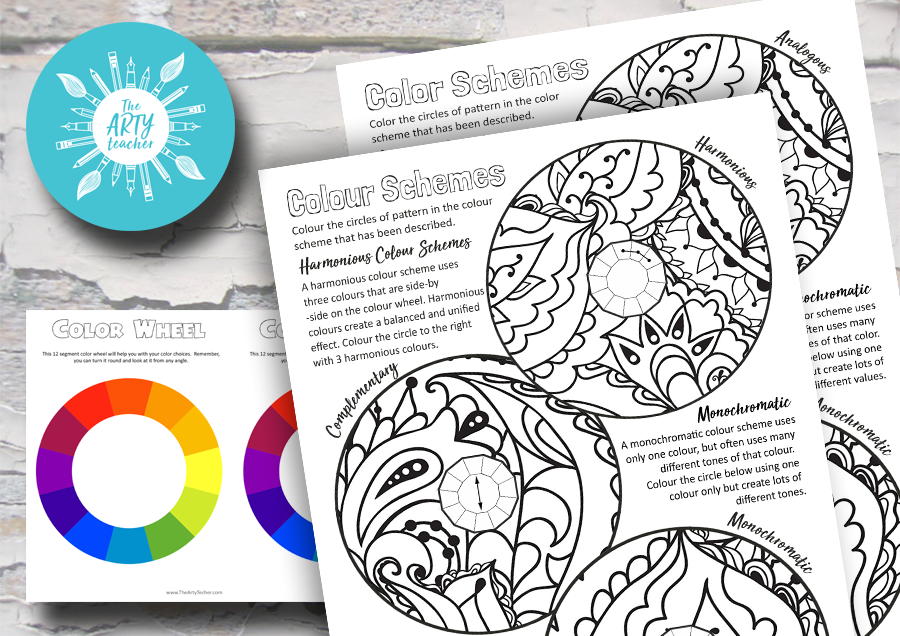
Strategies for Art Students Who Work Slowly
When I started writing this post about strategies for art students who work slowly, I was purely thinking of those students who produce amazing work but work painfully slowly. However, when I put a plee out on social media to share strategies, most people responded with strategies for students who need help remaining focused. The strategies below may be appropriate for one or both types of student.
Seating Plans
Keep those who work at a slow pace in easy view. You want to keep an eye on them! Sit them next to students who maintain a good pace and follow instructions well.
Targets and Timing
There are many ways to set targets and goals. Getting students to write a target of what they are going to achieve that lesson or within a time limit can work well. You can then go around and look at each one and discuss their progress. Alternatively, you can speak to an individual and say ‘I want you to complete X, I’ll be back in 10 minutes to see how you’ve got along.’ You can also demonstrate and then when the first few students complete a step and are moving onto the next step, praise those students and state ‘You should be moving onto X in the next few minutes’, or ‘You should have completed about a quarter of this task’.
Chunking
Break the lesson into chunks. Demonstrate the first part, ask students to do it, regather them to demonstrate the next chunk, ask students to do it. This makes for a fast paced lesson which I like. If a student hasn’t completed the first part they still need to join you to view the next part and it makes it clear that they need to hurry and catch up. It also helps those students who struggle to follow instructions that are more than a few steps.
Choice of Media
Some ways of working are quicker than others. For example, charcoal or working with stick and ink tend to be quicker than detailed pencil drawing and acrylic painting. If they work well in a quick media, encourage them to use more of this media. Perhaps encourage them to work on different surfaces to keep them making progress.
Cropping
I have students working on A1 pencil drawings using ferbies at the moment. Some are making speedy progress and others are creating amazing results but it’s slow going. I have discussed with these students how we could if necessary crop their work. They are making sure they are completing an area where cropping is possible. As their teacher you need to work with them and discuss the composition. How could it be cropped and still work really well?
Underpainting
In art, underpainting is an initial layer of paint applied to a ground, which serves as a base for subsequent layers of paint. Underpainting is often monochromatic and can help to define colour values for later painting. The advantage for slow workers is that this can definitely save time. After the initial layer, work with them to discuss other areas where they might be able to put down a base layer of paint and then add detail on top.
Colour Mixing
Colour mixing is time-consuming. Encourage students to mix a colour and paint all of that colour across the canvas, rather than mixing it again and again as they work across the canvas/paper. Suggesting this to students has really made me laugh on occasion, as for them it’s a real ‘the penny has dropped’ moment!
Creating a Series
Planning a series is a great strategy for a timed exam piece for students who work slowly. Plan a small series of paintings/drawings, on paper, canvas, even pebbles or other unusual surfaces. They can plan for 4, but if only 2 or 3 are completed, it’s not the end of the world.
Scale
Although a large scale piece can have a great impact, I’m not aware of an art exam course that gives points for working big. Small or even miniature work can be very appealing and just as skilled. For a list of artists who work small click here and look under miniature.
Technology
Using technology can really speed-up progress. I recently asked students to create a line drawing on their iPads as homework. They used Adobe Draw but you could use Brushes or any drawing App. They then changed the colour of the background several times, each time saving the drawing to their camera roll. They went on to print it out on coloured paper. The combination of printed colour and coloured paper made the colour really rich. One drawing turned into a full sketchbook page where valuable experimentation into different surfaces was going on. You’ll have to imagine the drawings below printed onto interesting papers!
For more information on what Apps I use, read my Apps for the Art Classroom blog post.
Fear of Failure
Some students put too much pressure on themselves or compare themselves to their peers, and this can affect pace. Being aware and sensitive to their issue is a start. Encouragement and instilling the idea that it’s ok to make mistakes early on in their school art career is very important.
Still hungry to try new ideas? These books offer strategies that you will use for the rest of your teaching career.









As a soon-to-be teacher, I don’t often get to be in the classroom setting for very long. But the classes I have observed in all have had a few students that for some reason were behind the rest of the class. Even as I take college art courses, Ive noticed theres a group of people who take far longer to complete their projects that the rest of the class. Reading this post has definitely given me some ideas on how to handle this situation as I go into student teaching and prepare to have my own classroom.
Something that has always helped me stay on task has been setting targets like mentioned above. What am I going to finish in this class session? How far do i need to get before I out my paintbrush down?
I think this will for sure help students keep up with their classmates or at least speed up their own processes.
Thanks for your insightful blog posts!
Thanks Crystal. All teachers, new and old, have to deal with this difficulty in the classroom. Sometimes it’s your best students who work slowly!